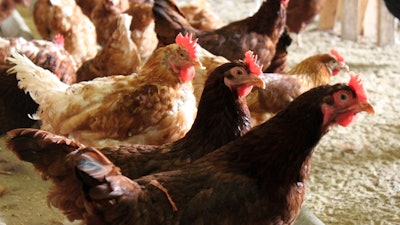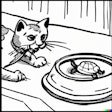
In human health supplement aisles, one can find whey protein hydrolysate. A similar process uses enzymes to make protein hydrolysates used in dog and cat food. Those hydrolysates may be more digestible for dogs than ingredients made from intact proteins, such as chicken meal. As alternative protein sources, hydrolyzed proteins also may be less likely to trigger allergic responses. In the United States, a group of researchers designed an experiment to measure those differences between hydrolyzed and intact proteins when included in dogs’ diets. The University of Illinois at Urbana-Champaign team examined how hydrolyzed proteins affected amino acid digestibility and protein quality in extruded dog foods in comparison with an intact protein source for adult dogs.
Experiment on chicken hydrolysate digestibility
The scientists made five formulations with similar recipes except for the main protein source. Chicken liver and heart hydrolysate and chicken hydrolysate were used to partially or completely substitute chicken meal in the experimental diets.
- Control: chicken meal (30%) diet;
- 5% chicken liver and heart hydrolysate: 5% chicken liver and heart hydrolysate with 25% chicken meal diet;
- Chicken liver and heart hydrolysate: chicken liver and heart hydrolysate (30%) diet;
- 5% chicken hydrolysate: 5% chicken hydrolysate with 25% chicken meal diet;
- Chicken hydrolysate: chicken hydrolysate (30%) diet
The researchers used the precision-fed cecectomized rooster assay to determine standardized amino acid digestibility for the ingredients and diets. The precision-fed cecectomized rooster assay involves a surgical procedure, similar to a human appendectomy, that turns roosters into an effective, efficient model for dogs’ and cats’ digestive systems. For decades, scientists have used the cececomtized rooster assay as a model of not only dog and cat digestion but also that of humans and livestock. Although differences exist between mammals’ and birds’ anatomy and metabolism, biologists have found that the cececomtized rooster assay provides a good estimate for dogs, cats and other animals’ digestion. The roosters experience few health issues from the surgical removal of their two cecum, or ceca. Roosters need a brief recovery period before the studies begin, then the birds can be housed and cared for just like other roosters in animal research facilities.
The scientists also calculated Digestible Indispensable Amino Acid Score (DIAAS)-like values for the protein ingredients.
“All protein ingredients had higher than 80% of digestibility for all indispensable amino acids with no difference among sources,” the University of Illinois team wrote in the Journal of Animal Science. “From the DIAAS-like values referencing AAFCO nutrient profile for adult dogs, chicken liver and heart hydrolysate and chicken hydrolysate did not have any limiting amino acid.”
To the contrary, chicken meal had a lower DIAAS-like value (93.3%) than chicken liver and heart hydrolysate and chicken hydrolysate. Tryptophan was the first limiting amino acid for chicken meal.
“Regarding the digestible indispensable amino acid concentrations in the diets, all of them met the AAFCO nutrient profile for adult dogs at maintenance,” they wrote. “In conclusion, both protein hydrolysates were highly digestible, high-quality protein sources, and a full substitution from chicken meal to protein hydrolysate could result in greater protein quality, according to the DIAAS-like values of the ingredients, when compared with chicken meal in extruded canine diets.”
Differences between chicken meal and hydrolysate
Processing Method: Chicken meal production involves cooking, rendering, drying, and grinding, while chicken hydrolysate production focuses on enzymatic hydrolysis, filtration, concentration, and drying.
Protein Structure: Chicken meal retains the original protein structure, whereas chicken hydrolysate breaks down proteins into smaller peptides.
Intended Use: Chicken meal is often used as a protein source in various pet food products, while chicken hydrolysate is valued for its high digestibility and potential benefits for pets with sensitivities.















